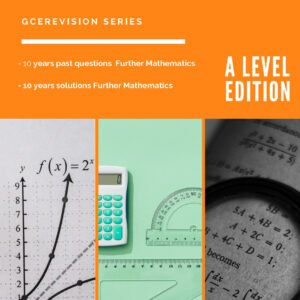A wave is a phenomenon in which energy is transferred through vibrations
Properties of waves:
1. The source of any wave is a vibration or oscillation.
2. Waves transfer energy from 1 point to another.
3. In waves, energy is transferred without the medium being transferred.
Transverse waves
- Transverse waves are waves that travel perpendicular to the direction of motion.
- Examples of such waves include rope waves and water waves.
- The crest is the highest points of the wave whereas the trough is the lowest points of the wave.
Longitudinal waves
- Longitudinal Waves are waves that travel parallel to the direction of motion.
- Examples are sound wave and pressure waves.
- They form compressions and rarefactions.
- Compressions are region where the air particles are close together, creating high pressure.
- Rarefactions are areas where the air particles are far apart, creating low pressure.
Wavelength
- A wavelength is the shortest distance between any 2 corresponding points in a wave.
- SI unit: metre.
- Amplitude is the maximum displacement from the rest or centre position (high of a crest or depth of a trough).
- SI unit: metre.
Period
- This is the time taken for 1 point on the wave to complete 1 oscillation.
- it is the time taken to produce 1 wave.
- The SI Unit is seconds (s).
Frequency
- Frequency (f):It is the number of complete waves per second.
- the number of occurrences within a given time period. When there is a higher frequency, more waves are produced in 1 second, thus the period will be shorter.
- SI unit: Hertz (Hz).
Wave speed
- the distance of the wave moved in 1 second in the medium.
- It is dependent of the medium itself.
- For example, for sound, the wavespeed is always the same unless the medium is changed from solid to liquid.
- measured in metre per second.
- an imaginary line on a live that joints all points that are in the same phase.
- It is usually drawn by joining the wave crests.
Reflection of waves
- When water waves get reflected, the only thing that changes is the direction.
- The wavelength, frequency and speed remains the same throughout.
- Sponges are used to absorb the reflections of the water waves.
Refraction of waves
- When water waves get refracted (move from deep to shallow water), the speed and the wavelength changes.
- The frequency of the wave does not change
Electromagnetic Spectrum
- Electromagnetic waves are transverse waves. They are electric and magnetic fields that oscillate at 90° to each other.
- They transfer energy from one place to another.
- They can travel through vacuum (do not require any medium to travel)
- They travel at 3.0 x 108 per second in vacuum. They will slow down when travelling through water or glass.
- The wave equation is applicable here too.
- They obey the laws of reflection and refraction.
- They carry no electric charge (they are neither positively or negatively charged)
- Their frequencies do not change when travelling from one medium to another. Only their speeds and wavelength will change.
![]() Most important equation
Most important equation
Sound
- Sound is a form of energy.
- The energy is passed from 1 point to another as a wave.
- Sound is an example of longitudinal wave.
- Sound is produced by vibrating sources placed in a medium (air).
- It travels in air through a series of compressions or rarefactions.
- Compressions: Air molecules are close together, forms high pressure.
- Rarefactions: Air molecules are far apart, forms low pressure.
Speed of sound differs in different medium
Air: 330 – 340m/s
Water: 1500m/s
Glass: 5000m/s
Speed of sound differs because:
- Differences in strength of interatomic forces
- Closeness of atoms in the 3 states
- Temperature
– The Wave Equation can also be used to find the speed of sound
– The speed of sound is solids like metals are so fast that we can assume/ignore the time it takes to travel a distance.
Echoes
- Echoes refer to the repetition of a sound resulting from reflection of the sound waves.
- Echoes are formed when a sound is reflected off a hard and flat surface.
- Reverberation occurs when the surface is too close, causing any reflected sound to follow closely behind the direct sound and prolonging the original sound.
Ultrasound
- The range of frequencies which a person can hear is known as the range of audibility.
- Human: Between 20 Hz and 20 kHz
- Dog: <20 kHz
- Bats: Between 10 kHz and 120 kHz.
- Human: Between 20 Hz and 20 kHz
- Ultrasound is the sounds with frequencies above the upper limit of the human range of audibility.
- Its small wavelength means less diffraction and the echo formed is more precise in direction.
- Applications for ultrasound include:
- Determining depth of seabed
- Locating sunken ships / shoals of fish
- Cleaning small dirt from jewellery
- Quality control (checking for cracks) in concrete
- Medical applications (development of foetus)
- Determining depth of seabed
Loudness
- a factor distinguishing between various sounds.
- The larger the amplitude of vibration, the louder the sound
- Sound is measured by decibels (dB).
Pitch
- a factor distinguishing various sounds
- The higher the frequency of a note, the higher the pitch
- Pitch is measured in hertz (Hz).
Thanks to http://www.gcestudybuddy.com/using-word-documents/waves













phatema
January 24, 2019
Nice content coverage. Liked it.